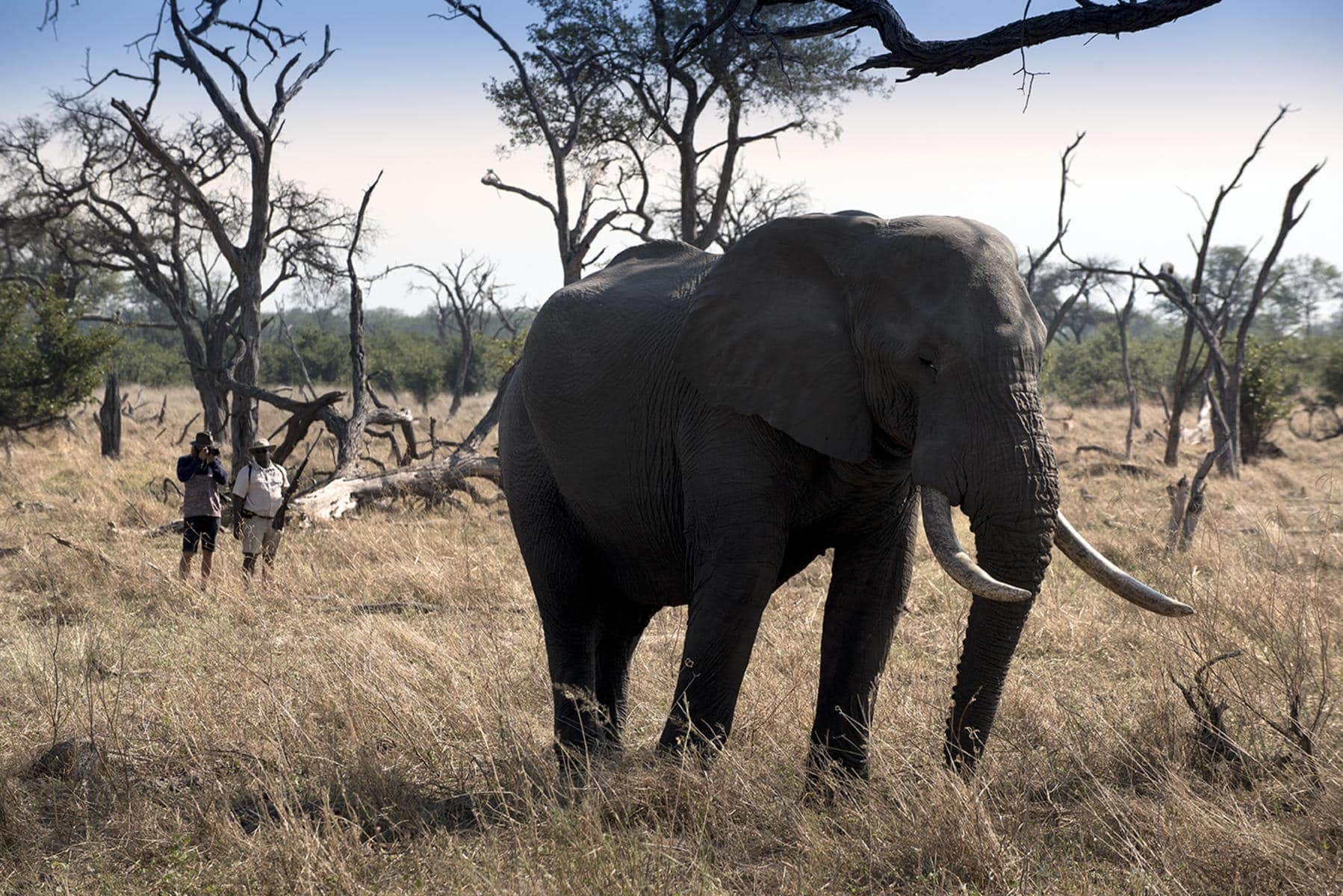Botswana is home to the Big Five and has the largest elephant population in the world, with colossal breeding herds and large solitary bulls traversing the landscapes of Chobe National Park and Moremi Game Reserve.
Wildlife of Chobe National Park and Moremi Game Reserve

Chobe’s broadleaf woodlands and riparian forests are home to the endemic Chobe bushbuck as well as other antelope species like puku, sable, and roan. Chobe also boasts over 560 species of birds, including birds such as the Schalow’s turaco, long-toed lapwing, Pel’s fishing owl, and rock pratincole to name a few.
Savuti, in the western Chobe region, is notorious for its elephant-hunting lions. The unpredictability of Savuti’s water supply has been known to set the scene for dramatic feats of survival between predator and prey. Savuti’s vast savannah plains are perfect for enjoying sightings of Burchell’s zebra, tsessebe, giraffe, and impala.
The Diverse Ecosystems of the Okavango Delta and Makgadikgadi Salt Pans

Red lechwe splashing through the swamplands, hippopotamuses treading confidently out of the water at midday, and lions swimming across water channels are just a few of the spectacular wildlife sightings awaiting visitors to the Okavango Delta. The Okavango comes into its own during the middle of the year when rainwater from the highlands of Angola fans out over temporary floodplains that teem with wildlife.
You could get lucky and spot a semi-aquatic sitatunga antelope lurking in the papyrus – or a Pel’s fishing owl. These beautiful owls replace their daylight rivals, fish eagles, on perches overlooking deep lagoons where they fish for large bream. The Okavango Delta is also the best place to see the near-endemic slaty egret, wattled crane, and special waterbirds such as the lesser jacana, white-backed night heron, and African skimmer.
The cracked and dry Makgadikgadi Salt Pans may not look like the environment that would attract a large wildlife population, but appearances can be deceiving. Come summertime, these desolate arid expanses sprout juicy patches of grass, attracting kudu, wildebeest, and zebra, followed closely by lions and cheetahs.
Along the Boteti River, you can watch southern Africa’s largest zebra migration and, come nighttime, shine a spotlight on the secret lives of playful bat-eared foxes and shy brown hyenas on a safari in Botswana.